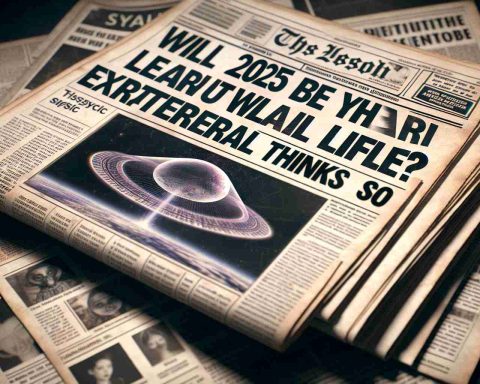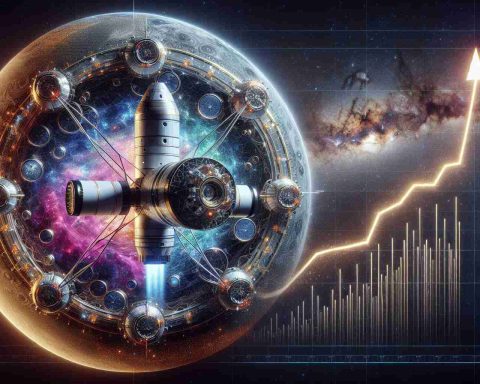- Dr. Frank Drake’s equation highlights the search for extraterrestrial civilizations.
- Recent research suggests a connection between dark energy and star formation.
- Dark energy may influence not only our universe but potentially a multiverse as well.
- Optimal dark energy density in our universe supports star creation at 23 percent.
- A hypothetical universe with lower dark energy could increase star formation to 27 percent.
- This study encourages a reevaluation of the conditions for intelligent life beyond Earth.
- Understanding dark energy is key to exploring the potential for life in the cosmos.
Have you ever gazed up at the stars and pondered if we’re truly alone in the universe? Dr. Frank Drake’s famous equation ignited this quest for extraterrestrial understanding, estimating the potential number of alien civilizations in our galaxy. Recent groundbreaking research from Swiss and UK scientists, however, has taken this cosmic curiosity a step further by exploring the intricate relationship between dark energy and the birth of stars—the very foundation for intelligent life.
Published in November 2024, this study posits that dark energy, an enigmatic force accelerating the universe’s expansion, might play a pivotal role in star formation. The researchers applied a novel theoretical model to assess how varying levels of dark energy impact the emergence of stars—not just in our universe, but across a potential multiverse brimming with unique cosmic rules.
Interestingly, the findings suggest that our universe, with its specific dark energy density, is nearly optimal for star creation. However, a hypothetical universe with a lower dark energy density could enhance star formation, leading to a greater likelihood of intelligent life. Imagine a realm where 27 percent of ordinary matter transforms into stars, compared to our universe’s 23 percent—a startling difference that could unlock endless possibilities.
The research nudges us to rethink our place in the cosmos. While we can’t definitively declare that aliens exist, the interplay of dark energy and star formation tantalizingly hints at a universe full of potential for life beyond our Earth. The real takeaway? Understanding dark energy may just unearth the mysteries of life’s existence among the stars.
The Cosmic Dance: Dark Energy and the Birth of Life in the Universe
Dark Energy and Star Formation: A New Frontier in Astrobiology
Recent advancements in our understanding of the cosmos highlight the intriguing relationship between dark energy and the formation of stars, which ultimately leads to the emergence of life. The groundbreaking research published in November 2024 by scientists from Switzerland and the UK suggests that variations in dark energy density could influence star formation across different universes, potentially expanding the horizons of astrobiology.
# Key Insights from the Research
1. The Role of Dark Energy: Dark energy is not only a mysterious force propelling the universe’s expansion but may also significantly impact the rate at which stars form. This research provides a theoretical framework for evaluating how changes in dark energy levels could alter star formation processes.
2. Optimal Conditions for Life: With our universe’s specific dark energy density being nearly ideal for star creation, the study proposes that other hypothetical universes with lower dark energy could yield a higher proportion of star formation. This variance could lead to an increased potential for intelligent life.
3. Multiverse Implications: The findings invite consideration of a multiverse, wherein different physical laws and constants may exist. Each universe could exhibit distinct capacities for star and subsequently life formation, fostering a renewed debate on the likelihood of extraterrestrial civilizations.
# Addressing Key Questions
1. How does dark energy influence the possibility of life elsewhere in the universe?
Dark energy’s role in star formation shapes the conditions essential for creating planets and environments conducive to life. By modeling varying dark energy densities, researchers speculate that more stars—and thereby more planets—could exist in other universes, enhancing the likelihood of life.
2. What are the broader implications of this research on our understanding of existence?
This research prompts a re-evaluation of our cosmological perspective. While the idea of parallel, vibrant universes is tantalizing, it also reinforces the idea that life could be more common across the cosmos than previously thought, regardless of whether we find definitive evidence for it.
3. Are there practical applications of understanding dark energy beyond theoretical exploration?
Understanding dark energy could have profound implications for cosmology, potentially revolutionizing how we approach questions surrounding the universe’s fate, structure, and our own existence. This could extend into technological innovations inspired by cosmic phenomena.
Exploring the Universe: The Future of Astrobiology
As researchers dive deeper into the complexities of dark energy and its relation to star formation, we may unlock answers about life in the cosmos. The study’s implications could redefine our search for extraterritorial civilizations, compelling us to consider not just our universe but potential others brimming with life.
For more information about debunking myths related to dark energy and life in the universe, check out NASA and ESA.




















